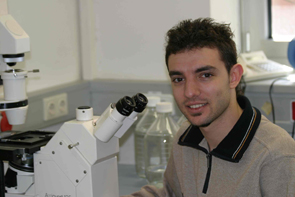
BTQ input is a Medline/OMIM-like query. Tunable parameters include the clustering and stemming algorithms to be used,
along with their own parameters. Results are presented in four different views,
namely: document clusters, tag clouds, interactive document graphs and the list of the extracted terms of biomedical significance.
To enhance these views even further, the extracted terms are annotated according to the biological entity
they describe (gene, protein, biological process, molecular function, and/or cellular components).
Importantly, users can sub-cluster and/or recluster, results from previous analyses.
References
1. Papanikolaou N*, Pavlopoulos GA*, Pafilis E, Theodosiou T, Schneider R, Satagopam V, Ouzounis C, Eliopoulos A, Promponas VJ, Iliopoulos I. (2014) BioTextQuest+: A knowledge integration platform for literature mining and concept discovery.
Bioinformatics, August 6, doi: 10.1093/bioinformatics/btu524. [PubMed]
2. Papanikolaou N., Pafilis, E.J., Nikolaou S., Ouzounis C.A., Iliopoulos I. and Promponas V. (2011) BioTextQuest: A Web-based Biomedical Text Mining Suite for Concept Discovery
Bioinformatics, Dec 1;27(23):3327-3328. [PubMed]
3. Iliopoulos, I., Enright, A.J. and Ouzounis C.A. (2001) TextQuest: Document Clustering of Medline Abstracts for Concept Discovery in Molecular Biology. Pac. Symp. Biocomput., 384-395. [PubMed]
Contributors

|
Evangelos Pafilis |

|
Nikolaos Papanikolaou |

|
Georgios Pavlopoulos |

|
Andreas Antonakis |

|
Theodosis Theodosiou |

|
Venkata Satagopam |

|
Reinhard Schneider |

|
Stavros Nikolaou |

|
Christos Ouzounis |

|
Aristeidis Eliopoulos |

|
Vasilis Promponas |

|
Ioannis Iliopoulos |